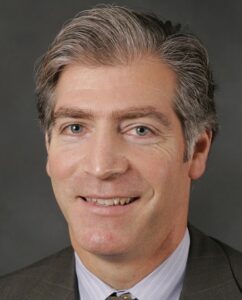In advance of EdSource’s October 6, 2016 symposium, “California’s New Vision for School Success,” EdSource asked Jonathan Raymond a few key questions of interest to symposium participants.

Jonathan Raymond
Jonathan Raymond is president of the Stuart Foundation and the former superintendent of the Sacramento City Unified School District, California’s 11th largest school district.
EdSource: Why should we teach learning mindsets and social and emotional skills to students?
Jonathan: Social and emotional learning, referred to as SEL, is a process by which adults and children become more aware of themselves, their feelings, and thus are better able to navigate their relationships with themselves and each other. These skills apply just as readily to solving complex problems, whether they are problems on the playground, at home, or on a math test. To succeed in our increasingly complex 21st century world, both academically and in a career, our children need an increasingly complex set of skills, and it is essential we use SEL to support that success.
Today, young people face enormous pressures not just from growing up, but from demands of testing, school structures that don’t enable children to be physically active, and a growing sense that violence is becoming the norm. With additional stress of poverty and trauma, the impact of these pressures can be extreme. If we want our kids to achieve more, we need to support them to be emotionally healthy.
SEL is much more than just another strategy. The inextricable links between our learning and executive functions with emotional regulation and co-regulation, physical activity, nutrition and environmental factors compels us to explicitly teach SEL skills. SEL provides a strategic framework for how school districts and schools can think about, and organize teaching and learning. It provides a lens to rethink how we are educating and supporting children. It provides an impetus for supporting and growing the skills and knowledge of our educators. It provides a standard for what behaviors and expectations we have in our classrooms and schools. It also gives focus to engaging and empowering parents and families.
EdSource: Where have you seen teaching SEL make a difference?
Jonathan: When I was leading Sacramento City Unified School District, we turned to our Waldorf-inspired schools and their focus on the “head, heart, and hands” for an orientation toward the whole child. Still today I frequently think of these schools and wonder how much different our youth would be if, like at a Waldorf school, all classrooms started and ended each school day with teachers authentically, and warmly greeting and sending off their children. Specifically, we looked at our suspension and expulsion data and were dissatisfied with how much time students were losing to punitive action, and so we moved to change policies toward restorative practices. We redesigned special education toward inclusive practices and the use of co-teaching models. I’ll never forget a parent who came to a school board meeting to share the story about her son with special needs who had spent a year in an inclusive classroom, and how he had finally made friends, and was finally enjoying school. She shared an image of her autistic son walking around a track during physical education holding hands with another student. Think of the acceptance, empathy, respect and understanding being taught to and by children. That’s powerful SEL!
EdSource: Should these skills be measured as part of a school’s report card?
Jonathan: Some of the most meaningful aspects of teaching and learning can’t be neatly packaged for standards or assessments. Curiosity, creativity, empathy, self-awareness — the skills essential to navigating our information-saturated world — aren’t always easy to measure with our available tools. I charge education leaders to not get caught up in trying to measure everything. Some of what we can measure isn’t always meaningful and some of what is meaningful can’t always be measured. Data might be clear, like improved academic performance or attendance, or more subtle like a student’s willingness to try new things, how much they smile and laugh, or their openness to holding the hand of a fellow student.
Regardless, it is important to capture information that describes how students exemplify these skills so that educators, community members, and students can engage with each other about this important topic.
To get more reports like this one, click here to sign up for EdSource’s no-cost daily email on latest developments in education.